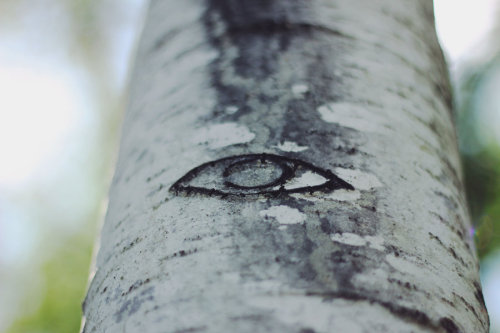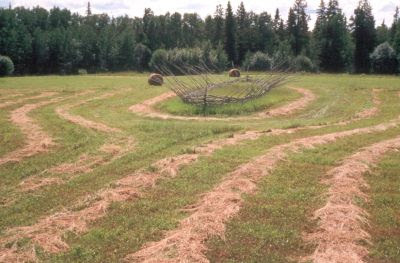[Shameless Self-promotion]

[Shameless self-promotion]
As we observe the winter solstice, my thoughts have turned to how solarpunks approach winter. As the days turn dark and cold, how does a society dependent on the sun continue to prosper?
Keep reading
More Posts from Copperfingertips and Others


I’m using a plant to catch a leak in the ceiling. “No such thing as waste in a permaculture system,” right?
The village of Kamikatsu in Japan has taken their commitment to sustainability to a new level. While the rest of the country has a recycling rate of around 20 percent, Kamikatsu surpasses its neighbors with a staggering 80 percent.
video / youtubechannel : Great Big Story



By copyrighting his property as an artwork, he has prevented oil companies from drilling on it.
Peter Von Tiesenhausen has developed artworks all over his property in northern Alberta. There’s a boat woven from sticks that is gradually being reclaimed by the land; there is a fence that he adds to each year of his life, and there are many “watching” trees, with eyes scored into their bark.
Oil interests pester him continually about drilling on his land. His repeated rebuffing of their advances lead them to move toward arbitration. They made it very clear that he only owned the top 6 inches of soil, and they had rights to anything underneath. He then, off the top of his head, threatened them that he would sue damages if they disturbed his 6 inches, for the entire property is an artwork. Any disturbance would compromise the work, and he would sue.
Immediately after that meeting, he called a lawyer (who is also an art collector) and asked if his intuitive threat would actually hold legally. The lawyer visited, saw the scope of the work on the property, and wrote a document protecting the artwork.
The oil companies have kept their distance ever since.
This is but one example of Peter’s ability to negotiate quickly on his feet, and to find solutions that defy expectations.
shopping responsibly
this is a sequel to my other post about alternatives to throwing things away. that post detailed some ways to reduce your waste, but the production, shipping, handling & transportation of new items can also be extremely wasteful & push costs up. obviously there’s no ethical consumption under capitalism & you aren’t a bad person for being unable to “shop ethically,” but some of these ideas can help with personal consumption. here are some tips about purchasing or acquiring goods with minimum environmental impact or just minimal financial impact.
ask around: ask your friends & neighbors if they have the desired item(s) that they are no longer using. this can be handy for most nonperishable goods, especially if you have a cooperative community. the free section of craigslist in your area is a good place to start, or the free section of the nextdoor app; you can also put up an advertisement in nextdoor or a similar app to ask if anyone has what you’re looking for & is willing to give it away.
thrift stores: good for clothing, furniture, & other things. it’s fairly easy to find a local thrift store online, & you never know what kind of treasures are there.
do your research before donating unwanted goods: some thrift stores that depend on donations will give out discounts to donators. you can use this on your next purchase at the store.
reselling sites: if you’re on the hunt for something more specific/that you prefer to be unused (such as makeup), people list all kinds of unwanted gifts & random things on resale sites. ebay is the most famous example, but poshmark, mercari & depop are all more fashion-focused places to get trends at a discount & without directly paying a corporation. thredup is the equivalent of an online thrift store, with more emphasis on basic/classic/affordable pieces. also, check out facebook for sale/trade groups in your area!
farmer’s markets: perfect for local produce. you support small businesses & get food that’s full of fewer artificial additives! warning, though: these can be pricey.
borrowing & renting: if you’re not going to need it forever, then don’t pay a forever price! often local hardware stores have tool rentals, for instance.
barter: trade something you don’t need for something you do. this can easily be another “ask around” one, but there are some websites specifically for swapping makeup, clothes, & more.
local artisans/stores: in the event that you absolutely NEED to buy something new, try getting it handmade or local. etsy is a good online marketplace for handmade goods, & some areas have their own sites/directories. ask around!
make it yourself/repair something: if you need something that you can create on your own (especially from reused materials), then just do it. see if you have a local makerspace, where you can access tools & assistance.
reuse: see if you have anything that would do the job, even if it’s not conventional. as long as it’s safe, you can do some WEIRD substitutions.
reduce: the classic solution, which is just not getting anything new. do you REALLY need another tube of lipstick? more shoes? your 5th jacket this season? i thought not!
edit: dumpster diving & curb picking are valid options as well. you might want to look into the legality of this in your area, but if you’re not afraid of getting your hands dirty it’s great. people throw away things that are still useable ALL the time.
this post isn’t exhaustive, so PLEASE add any websites or ideas that you might have! good luck!!










Denim Jackets
The Salty Senorita on Etsy
See our #Etsy or #Denim Jackets tags

I didn’t do the inktober this year, but I had fun with a tiny house :3
Shit No One Told Me About My Period
I knew the basics before I got it, but I had no clue…
* The blood wouldn’t necessarily be red. When I first got my period, I spent a few min looking at my underwear wondering how I shit myself. I didn’t know the blood could look brown, or be thick.
* That tampons weren’t a good idea yet. I was 10 or 11 when I got my first period and physically smaller than an adult woman. My first attempt at inserting a tampon was very painful and unsuccessful. I wouldn’t use them until I was around 14 or so.
* That when you use pads the blood can get on your bottom and I’d have to occasionally clean off the toilet seat after using it.
* That getting your first period DOES NOT mean you’re fully developed and fully able to bear children. I could have technically gotten pregnant at that age, but I was still a child and pregnancy would have put my life in danger because I was still physically immature.
* That it wouldn’t be regular for another few years.
* That very painful cramping is NOT NORMAL once you reach your 20s and is cause for concern.
* That the blood and tissue you pass can look chunky or stringy and not like blood from a cut.
* That stress can halt your period for months BUT
* That doesn’t mean you can’t get pregnant
Feel free to add your own


Self-watering capillary planters
This water-saving ‘ready-made garden’ design is popular among urban gardeners here in Denmark: it’s comprised of a simple styrofoam planter, and a 40L soil bag.
Holes are cut in the top and bottom of the soil bag, and soil is pushed into three pillars that reach down into a water reservoir. The reservoir is filled with water and fertiliser through a channel on the side of the planter; capillary action (and eventually, plant roots) draw the water up.
The rate of evaporation is much lower with bottom-watered plants, and the styrofoam also keeps the water cool. The reservoir can hold a week or more of water.
A popular DIY version involves using plastic tubs, creating a reservoir underneath with bottles, or a permeable barrier.

Self Irrigating Planters Made Easy
-
 saint-cicadidae liked this · 6 years ago
saint-cicadidae liked this · 6 years ago -
 mendelpalace liked this · 6 years ago
mendelpalace liked this · 6 years ago -
 femmanist liked this · 6 years ago
femmanist liked this · 6 years ago -
 bumblebeeappletree reblogged this · 6 years ago
bumblebeeappletree reblogged this · 6 years ago -
 bumblebeeappletree liked this · 6 years ago
bumblebeeappletree liked this · 6 years ago -
 pocketanon liked this · 6 years ago
pocketanon liked this · 6 years ago -
 starlightburden liked this · 6 years ago
starlightburden liked this · 6 years ago -
 rollership reblogged this · 6 years ago
rollership reblogged this · 6 years ago -
 copperfingertips reblogged this · 6 years ago
copperfingertips reblogged this · 6 years ago -
 gayofgaymark2 liked this · 6 years ago
gayofgaymark2 liked this · 6 years ago -
 lostandperplexed liked this · 6 years ago
lostandperplexed liked this · 6 years ago -
 romulousofatlantis liked this · 6 years ago
romulousofatlantis liked this · 6 years ago -
 clarkkent-irons liked this · 6 years ago
clarkkent-irons liked this · 6 years ago -
 solarpunk-gnome reblogged this · 6 years ago
solarpunk-gnome reblogged this · 6 years ago